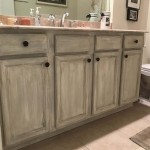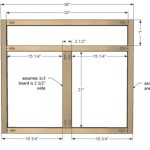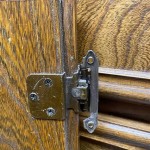Cutting Crown Moulding for Kitchen Cabinets
Crown moulding is a decorative trim that adds a stylish and elegant touch to kitchen cabinets. It can elevate the overall look of your kitchen, creating a more sophisticated and polished appearance. Cutting crown moulding for kitchen cabinets requires precision and attention to detail, but it's a relatively easy task that can be completed with the right tools and techniques.
Here are the essential aspects of cutting crown moulding for kitchen cabinets:
1. Measuring and Planning
Before cutting any moulding, it's crucial to accurately measure the length of the cabinet and the angle at which the moulding will be cut. Use a measuring tape to determine the length and a protractor or miter saw to measure the angle. Once you have the measurements, mark them onto the moulding using a pencil or chalk.
2. Using a Miter Saw
A miter saw is the most efficient tool for cutting crown moulding at precise angles. Set the saw to the correct angle based on your measurements and position the moulding onto the saw table. Secure the moulding in place using the saw's clamps and slowly lower the saw blade through the moulding. Repeat the process for the other side of the moulding to create a matching pair of angled cuts.
3. Dry Fitting
Before permanently attaching the crown moulding, it's advisable to dry fit it to ensure a snug fit. Place the cut pieces onto the cabinet and check for any gaps or unevenness. If necessary, adjust the angle of the cuts using the miter saw until the moulding fits perfectly against the cabinet and ceiling.
4. Securely Attaching
Once you're satisfied with the dry fit, you can securely attach the crown moulding to the cabinet. Use small nails or screws to fix the moulding in place, ensuring that the nails are driven into studs or other strong supports. Countersink the nails slightly below the surface of the moulding using a nail set or punch. Fill any nail holes with wood filler and touch up the paint or stain to match the existing finish.
5. Caulking and Trimming
To conceal any small gaps between the crown moulding and the cabinet or ceiling, apply a thin bead of caulk. Use a caulk gun to dispense the caulk evenly and smooth it out using your finger or a caulk tool. Trim any excess caulk and touch up the paint or stain as needed to create a clean and professional-looking finish.
Conclusion
Cutting crown moulding for kitchen cabinets is a rewarding task that can enhance the aesthetics of your kitchen. By following these essential aspects, you can achieve precise and professional-quality results. Remember to take your time, use the right tools, and pay attention to detail to ensure a beautiful and enduring finish.

How To Cut Crown Molding For Cabinets 12 Steps With S

How To Install Crown Molding On Cabinets Young House Love

How To Cut Crown Molding For Cabinets 12 Steps With S

How To Miter Crown Molding At Any Angle The Kim Six Fix

Installing Kitchen Cabinet Crown Molding

Adding Height To The Kitchen Cabinets Tempting Thyme

How To Cut Crown Molding For Cabinets 12 Steps With S

Installing Crown Molding On Kitchen Cabinets

Crown Transitions For Corner Cabinets

How To Install Kitchen Cabinet Crown Molding Family Handyman
Related Posts








